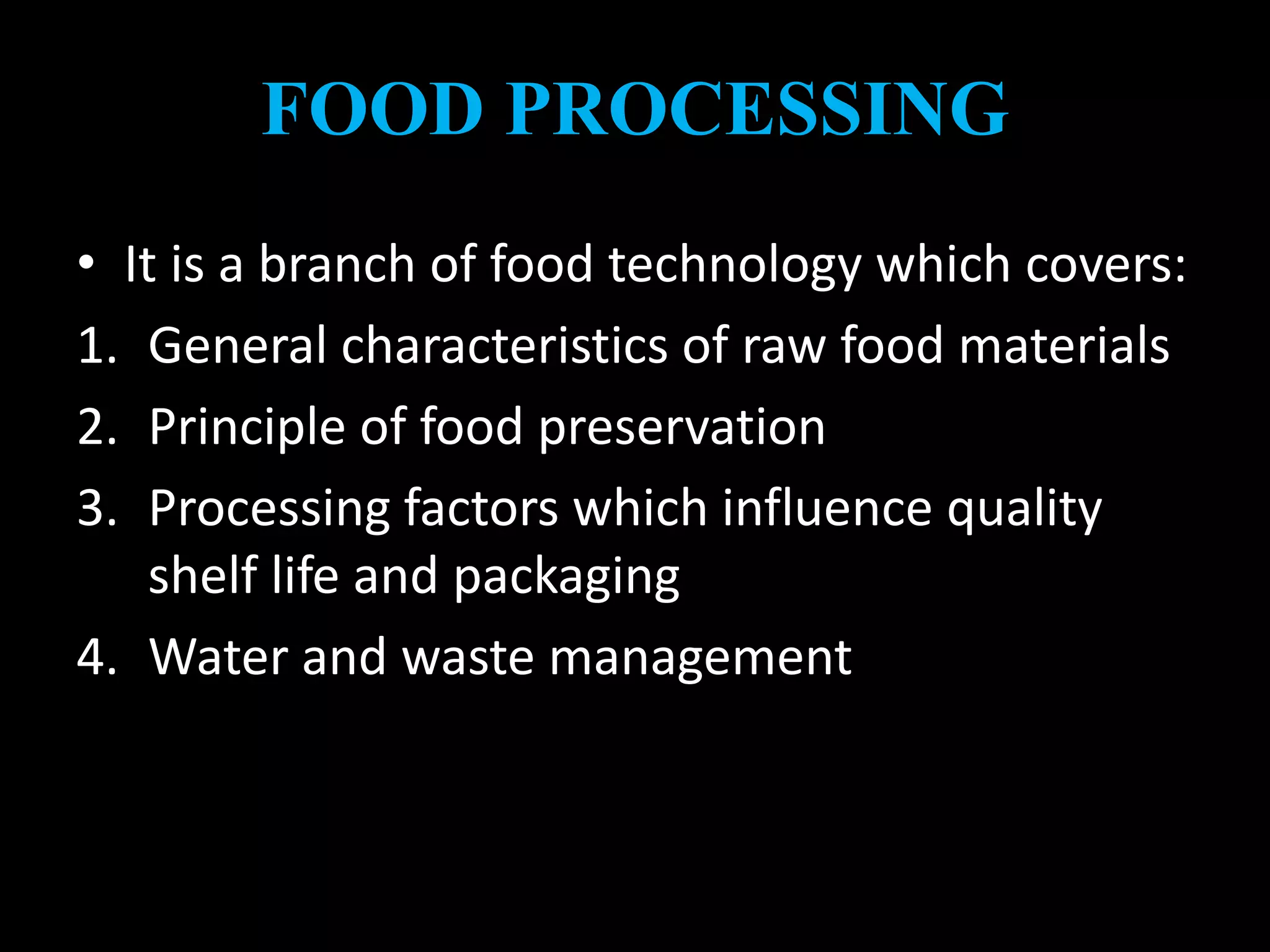The document discusses food processing and preservation. It covers the physiological, psychological, and social functions of food. Food is classified based on nutritive value into basic food groups like basic four, basic five, and basic seven. Methods of food preservation include thermal processing like cooking, blanching, and pasteurization which destroy microorganisms and inactivate enzymes. Other methods are use of chemicals, drying, filtration, fermentation, and irradiation to prevent spoilage from microbes, insects, and chemical/physical factors.





































